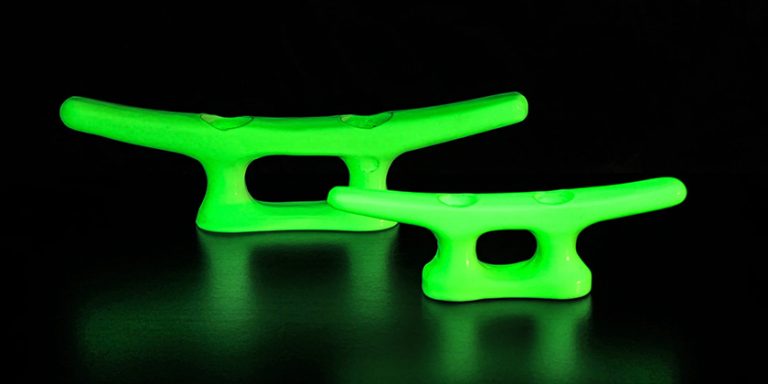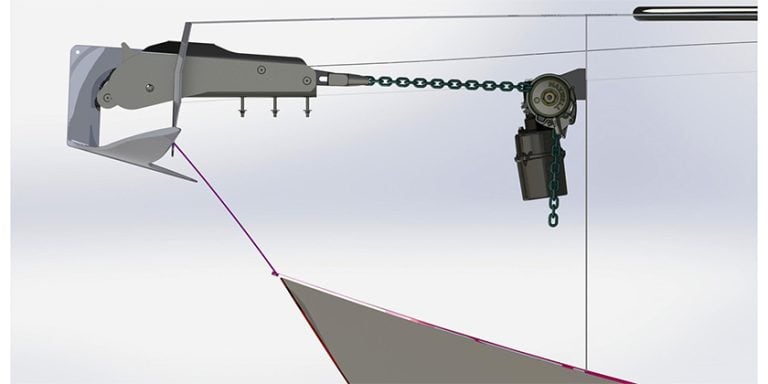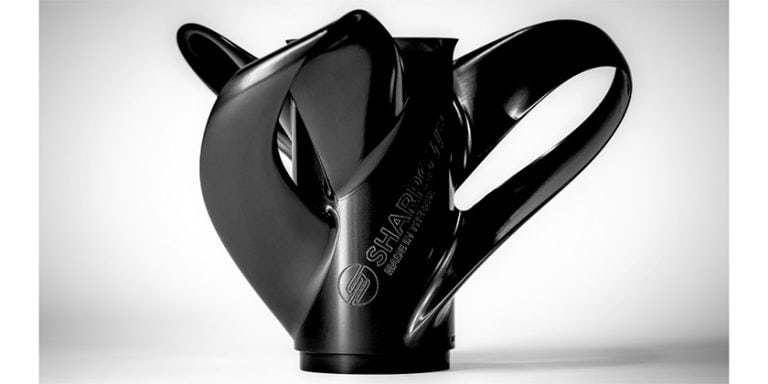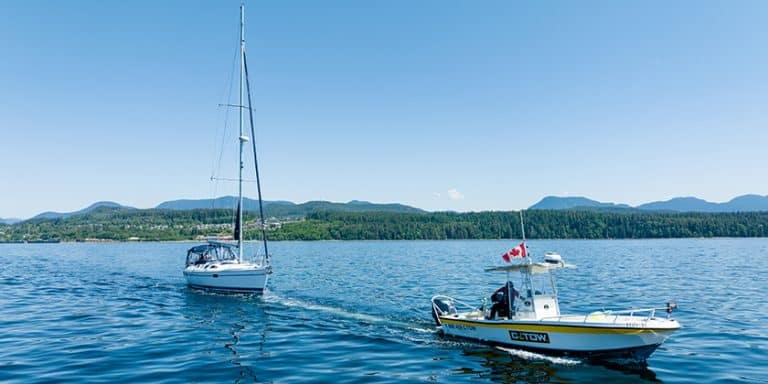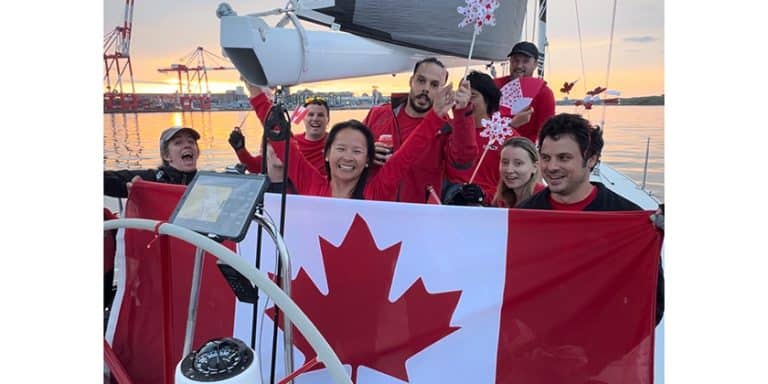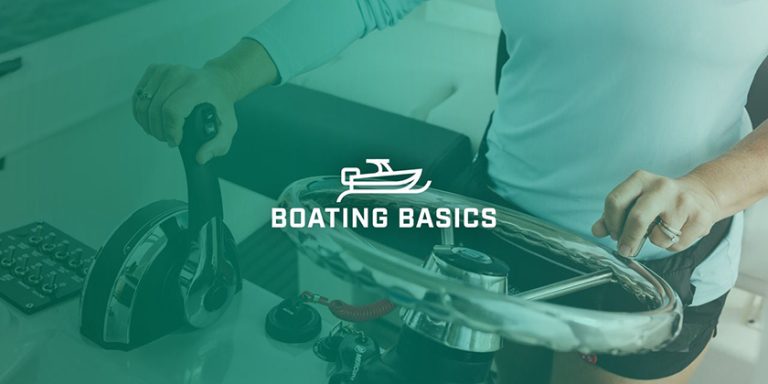Zipwake Interceptor System
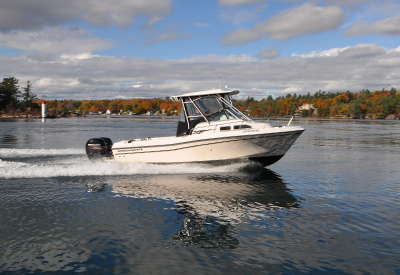
Let me level with you…
By Andy Adams
With the Zipwake turned off the boat rides bow up and needs more throttle
I’ve been doing powerboat reviews for Canadian Yachting magazine for over 40 years now and I want to confess to a bias I have – I don’t use the trim tabs in my reviews. I want to feel how the boat naturally runs without using the tabs to adjust the ride angle or the side-to-side trim.
As experienced owners know, most powerboats operate more efficiently when the trim tabs are used with skill and understanding, but you need to have experience with the boat to know how it behaves under different conditions of load and trim to do that. And those factors can vary considerably.
Trim systems work by creating drag in one form or another. As the tab is deployed downwards into the water, it creates pressure that amounts to lift at the transom where the tabs are mounted. The tabs can be operated independently port and starboard and by using more “tab” on one side, you can counter the effects of an uneven load in the boat, or pressure from side winds.
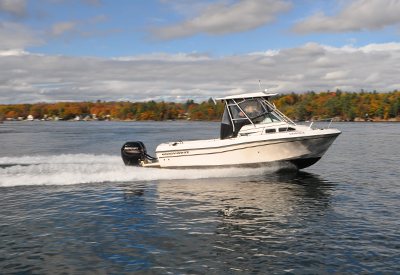 Conventional trim tab systems have been used on boats, especially larger boats, since long before I started my writing career. Recently these systems have been improved with lighted indicators and much faster deployment, but on many boats, the tabs need a few seconds to deploy fully and the boat actually takes a little time to respond. As a result, I have often “over-tabbed” on boats I’m not familiar with, causing them to heel over too much at first.
Conventional trim tab systems have been used on boats, especially larger boats, since long before I started my writing career. Recently these systems have been improved with lighted indicators and much faster deployment, but on many boats, the tabs need a few seconds to deploy fully and the boat actually takes a little time to respond. As a result, I have often “over-tabbed” on boats I’m not familiar with, causing them to heel over too much at first.
With the Zipwake on, the boat levels off and gains speed at the same throttle setting
In the last few years, a new system has come on the market and these are called “interceptors”. Zipwake is the brand name and the interceptors are not flat tabs that extend behind the boat, they are blades that drop vertically from the edge of the transom.
IMTRA is the company that brings Zipwake interceptors into our market and to me, it’s counterintuitive that these would work. I am accustomed to trim tabs which are like a flat metal panel extending out beyond the stern of the boat, that can be pressed down into the water by hydraulic or electromagnetic rams.
Interceptors work differently. Instead of being a flat tab, the interceptor is a blade attached to the trailing edge of the transom. The interceptor blade drops vertically, just a few millimetres, from the trailing edge of the transom.
It looks to me like this would create a lot of drag but apparently, it doesn’t work that way. Instead, it creates lift, but with a smaller surface than a trim tab would have.
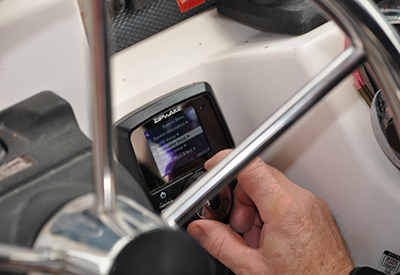 From information supplied by Zipwake, the interceptor can be fully deployed in 1.5 seconds compared to 5 or 6 seconds for a conventional ram-actuated trim tab system. There are various sizes of both interceptors and trim tabs, but typically, the interceptor blades only travel downwards about 30 millimetres. Comparable trim tabs may drop 150 millimetres, so it’s not surprising that they take longer to deploy and create more drag.
From information supplied by Zipwake, the interceptor can be fully deployed in 1.5 seconds compared to 5 or 6 seconds for a conventional ram-actuated trim tab system. There are various sizes of both interceptors and trim tabs, but typically, the interceptor blades only travel downwards about 30 millimetres. Comparable trim tabs may drop 150 millimetres, so it’s not surprising that they take longer to deploy and create more drag.
This is the Zipwake screen and controller. Sandy has re-set the system for our demonstration.
In developing the Zipwake system, the engineers set out to create a system that would manage pitch (fore and aft attitude of the boat) and roll (side to side angles) and they used 3D gyro sensors and a motion controller, plus a built-in GPS system to achieve this.
The dashboard-mounted Zipwake control screen is small, but conveys important information and includes an “Auto” button that runs the system automatically. The manual Zipwake controls allow you to set your boat up for what is normally optimum, then the system can run to those settings on Auto without further driver adjustment.
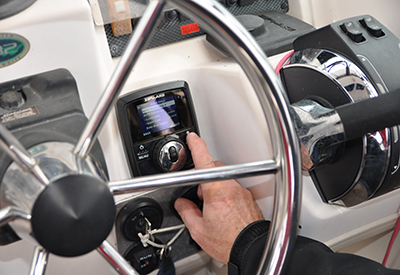 Test run
Test run
It was early November and I drove through my first snow of the season to get to the Thousand Islands for an opportunity to go for a ride with boat owner Sandy MacKenzie and Don Hood from IMTRA. Sandy’s boat is a 2003 Grady-White 232 Gulfstream model and it is very much the same deep-vee hull design that Grady-White still uses. It was originally created by the noted firm of Raymond Hunt Associates.
You can determine the fore and aft pitch as well as the roll limits.
The Grady-White has an excellent deep hull design, ideally suited to life in the Thousand Islands and Sandy‘s boat was equipped with twin four-stroke Mercury 150s that performed admirably. It’s by no means a new rig, but it ran beautifully for our test ride and Sandy stated that it runs a lot better since the Zipwake system was installed.
Setting up the Zipwake system
It was a bit awkward taking photographs through the steering wheel to capture the control panels as we were driving, but it’s an interesting display with a lot of information and some good features. For example, the system integrates GPS and that gives you a GPS speed read-out. Especially in a smaller boat that might not otherwise have accurate speed measurement, this is important and appreciated. Sandy’s Grady-White was equipped with Mercury engine instrumentation so we were able to run the boat at particular RPM settings to develop a comparison of how it works with and without the Zipwake system turned on.
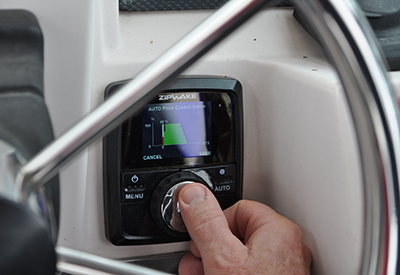 I asked Sandy what he liked best about the system. Right away, he mentioned that the boat turns flatter. That was important to Sandy as an islander since he makes his way through groups of islands and narrow passages to get home. Turning at speed is important. His second point was how the boat now will hold the plane down to 3000 RPM where it did not before installing the Zipwake system. The third big benefit was that it automatically keeps the boat level even when passengers move around onboard, or when side winds affect the roll angle.
I asked Sandy what he liked best about the system. Right away, he mentioned that the boat turns flatter. That was important to Sandy as an islander since he makes his way through groups of islands and narrow passages to get home. Turning at speed is important. His second point was how the boat now will hold the plane down to 3000 RPM where it did not before installing the Zipwake system. The third big benefit was that it automatically keeps the boat level even when passengers move around onboard, or when side winds affect the roll angle.
You can try different settings to determine the optimum for your boat and load
User friendly
Although Sandy had it all set up to run the way he wanted, to give me a demonstration, he very kindly undid everything, changed the settings in a few ways and gave me an opportunity to drive the boat myself.
We drove the boat the way the owner drives it and part of that is that he accelerates by easing the throttles ahead rather than flooring it. That was an interesting exercise. As the boat accelerated, we could see from the Zipwake screen that the interceptors were deploying to a different extent on either side and were varying with the boat speed.
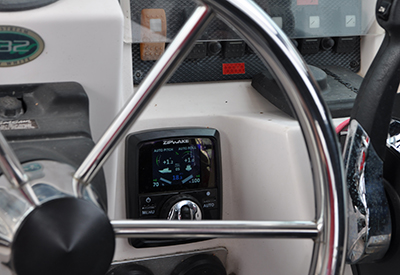 As background, the Grady-White originally had trim tabs and one had broken, so rather than replace that, Sandy went to the Zipwake system and the boat was also upgraded to a pair of Enertia stainless steel props replacing the Mercury OEM aluminum propellers.
As background, the Grady-White originally had trim tabs and one had broken, so rather than replace that, Sandy went to the Zipwake system and the boat was also upgraded to a pair of Enertia stainless steel props replacing the Mercury OEM aluminum propellers.
As we accelerated under light throttle, we could see that at six knots the Zipwake interceptors were deployed at 20% while the speed increased and the boat planed off.
This shows the speed has risen to 18.3 knots and the Zipwake is deployed 70% on port but 100% on starboard to keep the roll level.
An owner can adjust the settings for this to optimize the performance for their boat although it should also be mentioned that if a boat builder is fitting these to all of their models as original equipment, they can test to determine the optimum setting and then “flash the memory” automatically to the best settings.
In deference to the privately owned boat we were using, we didn’t “floor it” and time the acceleration, but it was easy to see that when we took the Zipwake off, it took the boat longer to plane and required more throttle and higher speed.
Sandy had programmed the boat to deploy the Zipwake to between 88 and 100% at 3000 RPM and a boat speed of 15 knots to keep the boat planed off at this low throttle setting. We found the settings had gone to zero by the time we reached 4000 RPM travelling at 24.5 knots.
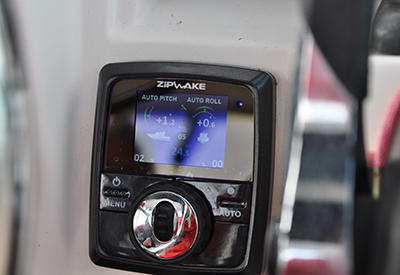 Originally, Sandy‘s boat with conventional trim tabs and OEM aluminum propellers would tend to cavitate on tighter turns.
Originally, Sandy‘s boat with conventional trim tabs and OEM aluminum propellers would tend to cavitate on tighter turns.
Now at 4,000 rpm we are doing 24.5 knots and the Zipwake system is at 2% on the port side and 0 on starboard. It’s actively keeping the boat level side to side as we go.
Now, the fast responses of the Zipwake system held the boat more level and prevented cavitation when turning. He also noticed that the change to stainless-steel Enertia props reduced cavitation.
With the Zipwake, once we were planed off, Sandy could throttle back to 3000 RPM and the boat would remain solidly planned off with the bow down and had a very good ride angle to deal with fighting through heavy weather. The Zipwake system reacts fast; you had to watch the readout to realize that it was working. The boat just felt solid and stable.
On top of that, Sandy had installed the Zipwake system himself. It comes with clear and complete instructions. The boat has to be out of the water for the installation of course, but it’s within the abilities of many experienced do-it-yourselfers.
So, let me level with you…over the course of several seasons, the fuel savings and the reduced strain on the engines should more than justify the price of the Zipwake system and installation. The setup seemed pretty straight forward and once it’s set, the Auto function responded almost instantly. We were quite impressed with the ease of use.
Ask your dealer about Zipwake or investigate online: https://zipwake.com/

